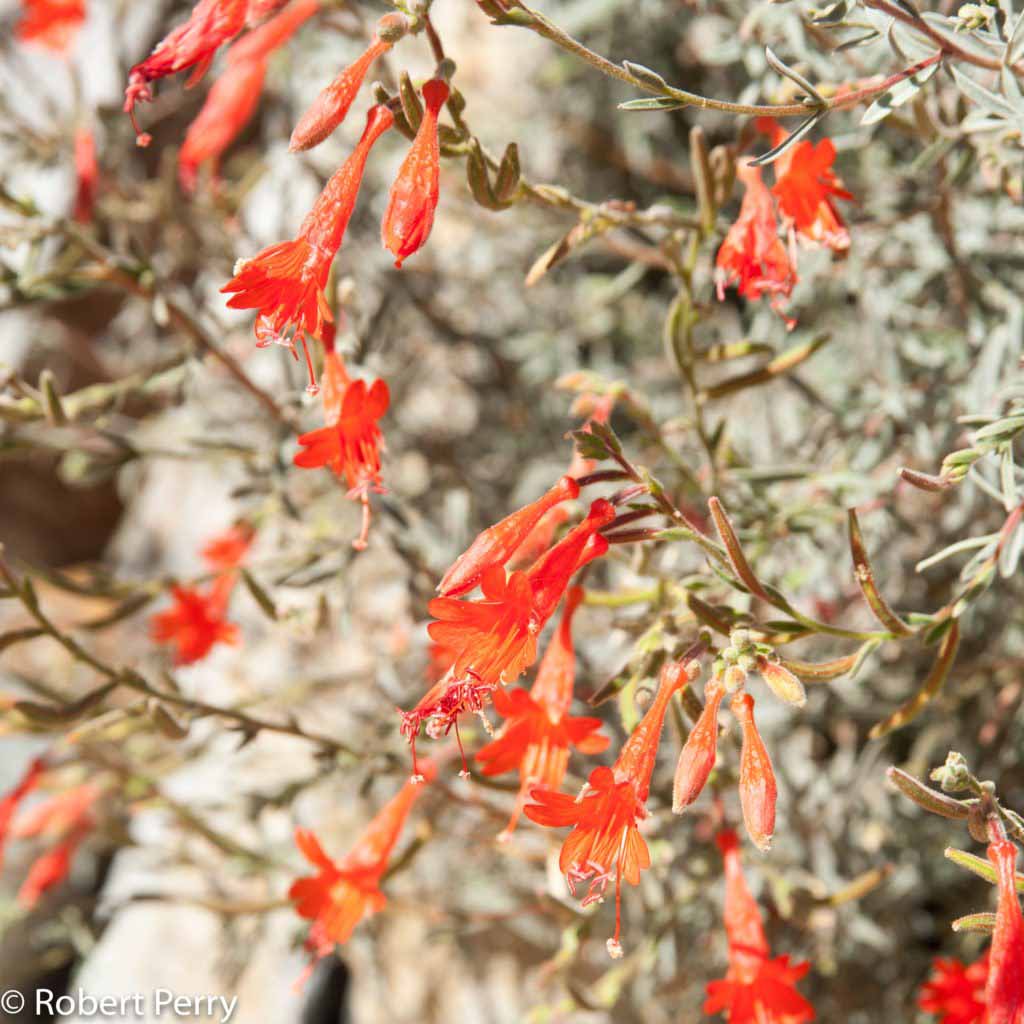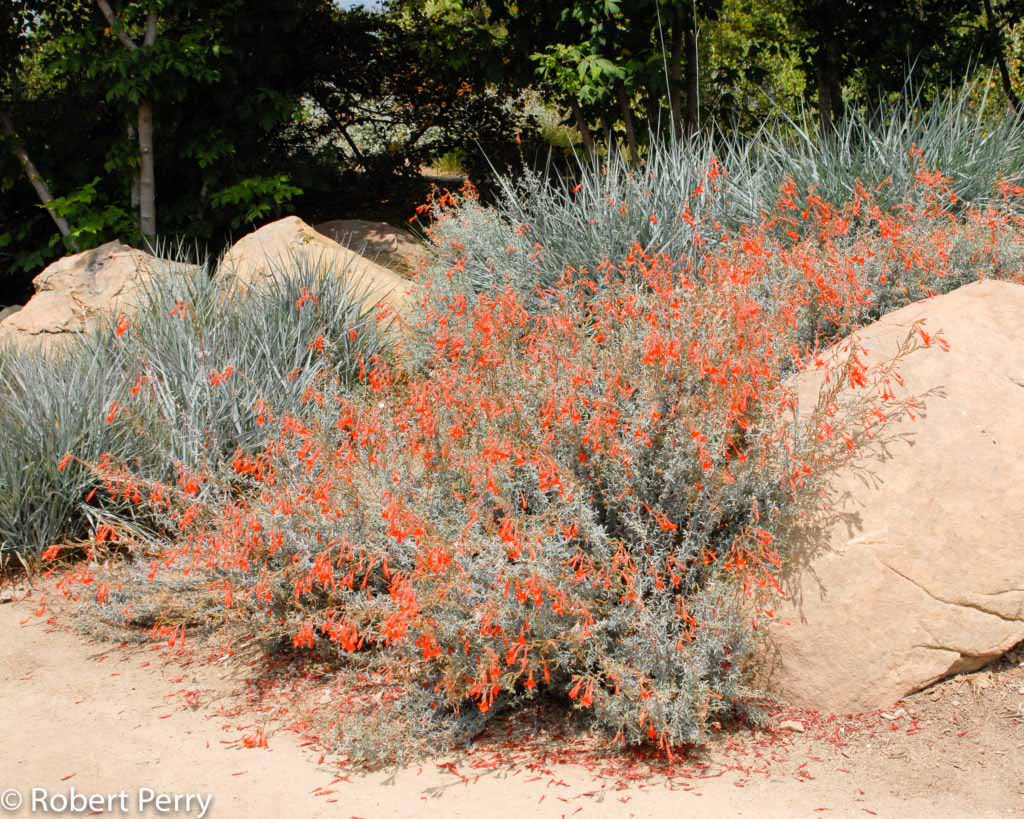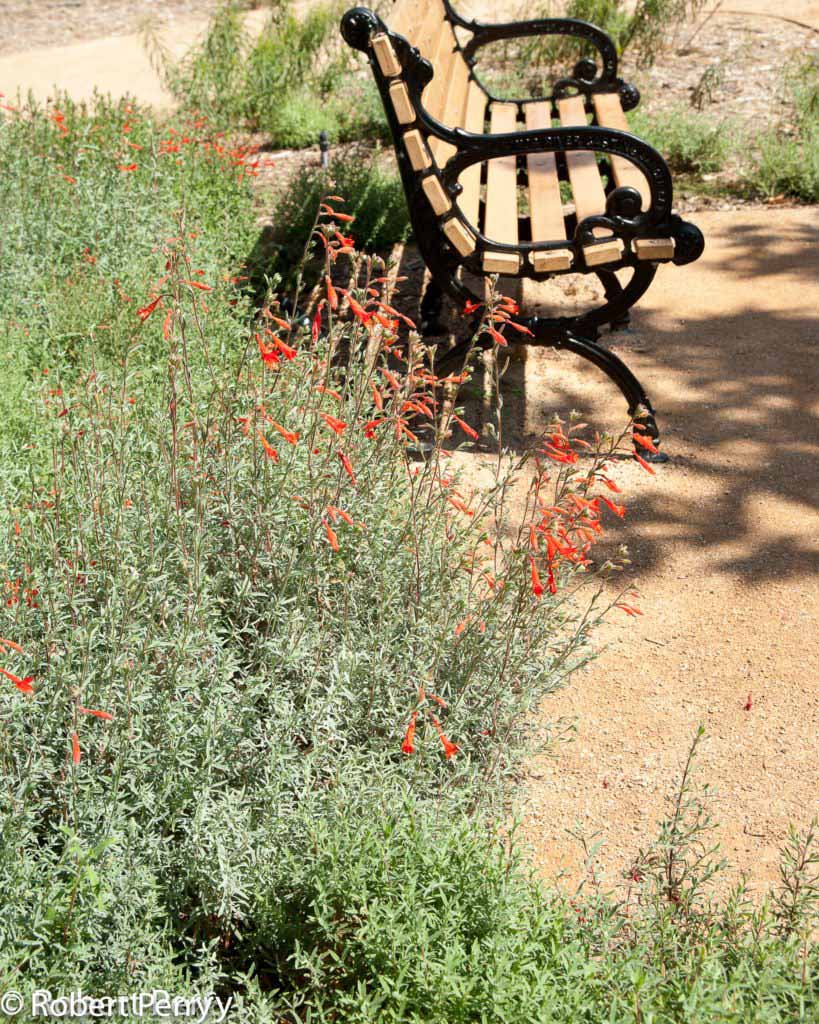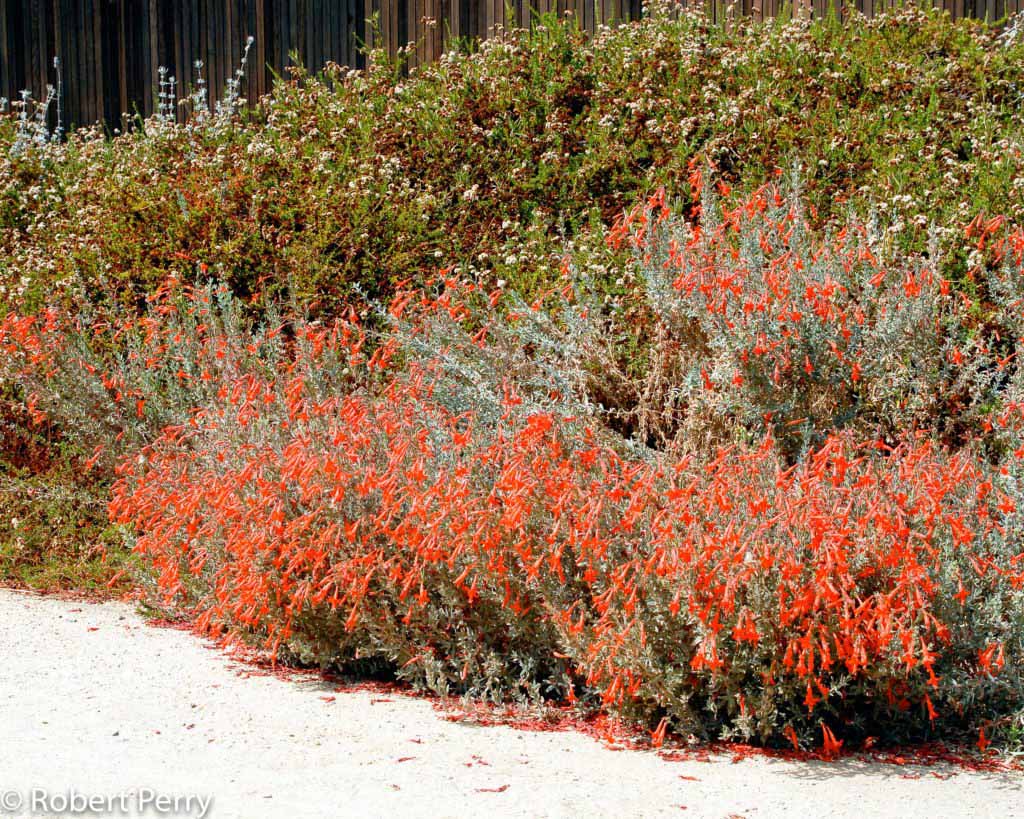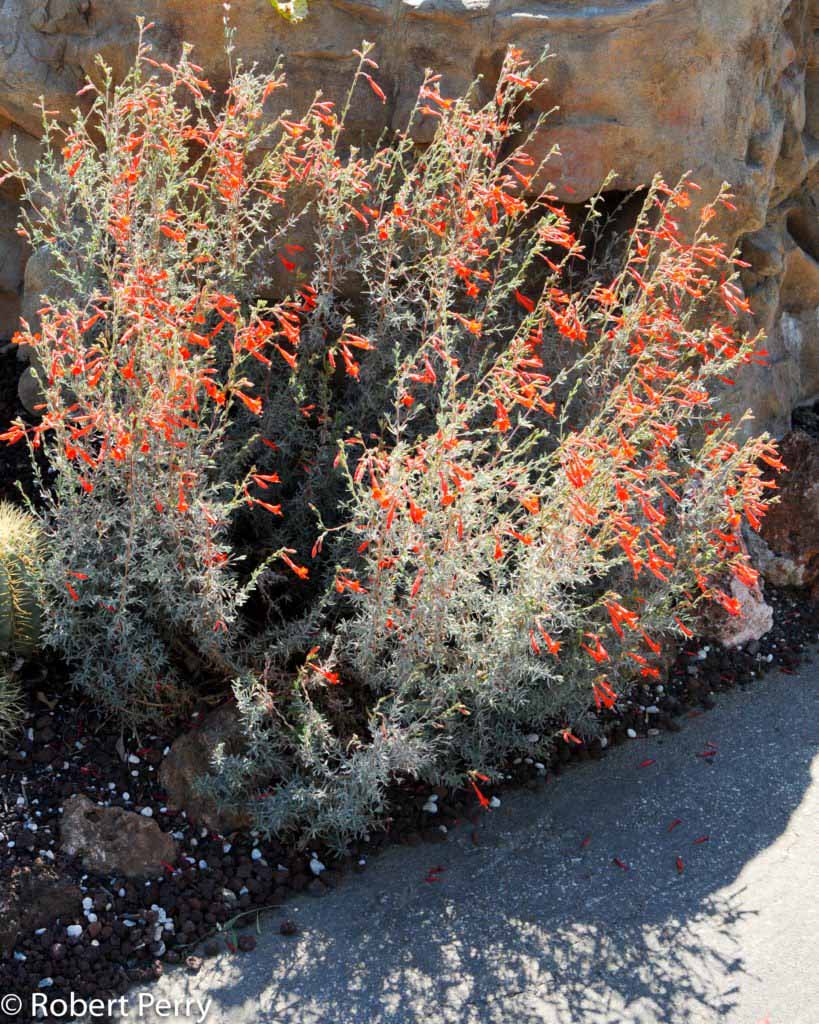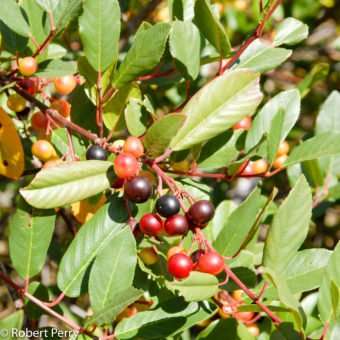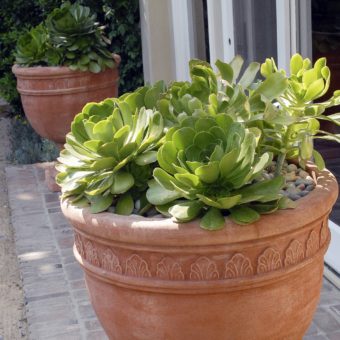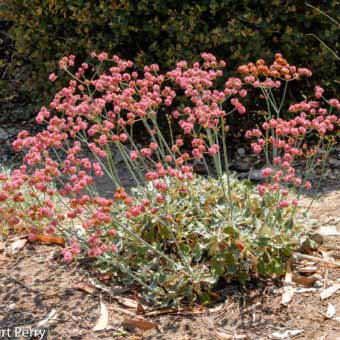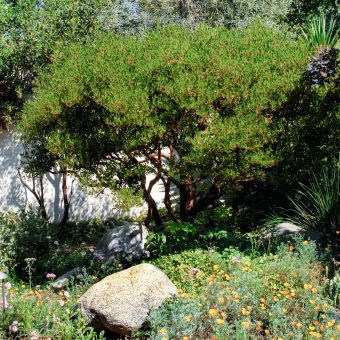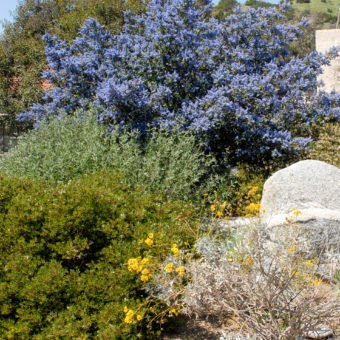The California fuchsia is a low growing perennial plant with striking summertime flowering character. It is native to many dry habitats throughout California, particularly in sage scrub and chaparral environments. Distinctive gray-green leaves are covered with fine hairs; flowers are primarily scarlet to orange-red. Flowering occurs in mid to late summer and continues into fall, which is an important season to provide nectar for hummingbirds. This is a highly popular California native plant, and while a number of cultivars are available from various nurseries, they vary from nursery to nursery and the names are sometimes confused. Plant in sunny locations on well-drained soils and provide little summer water.
California fuchsia
Epilobium canum
Description
Plant properties
Water needs
Maintenance
Commercial sites
Plant Type: Perennial, Native
Foliage Character: Evergreen
Habit: Spreading, Sprawling
Growth Rate: Short-lived, Fast
Foliage Color: Pale green
Flower Color: Red, Orange
Flower Season: Summer, Fall
Soil Adaptations: Well-draining soil
Exposure Adaptations: Drought, All day sun
Function: Rock gardens, Raised planters, Hummingbird plant, Small spaces, Flowering accent plant, Container plant, Borders, Wildlife value
Height: 0.5 ft. – 4 ft. (in flower)
Width: 3 ft. – 3 ft. then slowly spreading
Foliage Character: Evergreen
Habit: Spreading, Sprawling
Growth Rate: Short-lived, Fast
Foliage Color: Pale green
Flower Color: Red, Orange
Flower Season: Summer, Fall
Soil Adaptations: Well-draining soil
Exposure Adaptations: Drought, All day sun
Function: Rock gardens, Raised planters, Hummingbird plant, Small spaces, Flowering accent plant, Container plant, Borders, Wildlife value
Height: 0.5 ft. – 4 ft. (in flower)
Width: 3 ft. – 3 ft. then slowly spreading
Watering Schedule: Low 1
For most situations, we recommend watering deeply every 3-4 weeks after establishment.
Learn how to apply this watering schedule to your landscape on our How to water waterwise and California native plants page.
Important Notes
- These are general guidelines. Always observe and adjust as necessary for your landscape.
- If it rains over 1” you will likely not need to water for at least another 3-4 weeks. Before watering again, check the soil. It should be significantly dry at least 4” below the soil surface before watering.
- If you have a “smart timer” or weather sensitive irrigation controller, it is best not to use the automatic weather adjusting features for plants in this category. While very useful for watering higher water demanding plants, those in this category have natural drought adaptations which mean they do not need to be watered more in warm weather. Using the weather adjusting features will result in either overwatering in summer or underwatering in fall and spring.
- It is important to group plants with the same water needs together in the landscape to avoid needing to over or under water plants when running your irrigation system.
For the first year after planting California fuchsia, it is recommended to do no significant pruning. Just let the plant become established and well rooted. Hard pruning before the end of the first year may result in plants not yet being well enough rooted to grow back (S).
After the plant has been in the ground and growing well for at least one year, cut back hard or all the way to the ground or an inch or two above the ground, as necessary, once it is looking spent in mid-winter to prepare for fresh Spring growth (1). Can be propagated by division in the Fall (2).
California fuchsia can come up from seeds in other parts of your garden. This may be welcome. If you do not want it to spread from seed, cut back after most flowers fade, but before seed pods develop and dry (S).
Most California fuchsias will slowly spread by rhizomes. If you do not wish plants to spread, pull out spreading stems as they come up. Stems are brittle and pull out easily (S).
Large areas of California fuchsia, especially on commercial sites can usually be well maintained by using a string trimmer for the cut back, followed by raking out most of the cut material. We use this technique to maintain large stretches of California fuchsia in the California native planting along pathways in the park at the Waterwise Community Center (S).
References
Sign Up For Free
To access all the features of this website, please create an account with us. Privileges include:
- Ability to print plant groups, lists and plant profiles
- Create your own plant groups
- Receive monthly updates by email
An online resource for you to learn about and choose the best plants for your inland Southern California landscape.
Promoting water conservation through education, stormwater capture, waterwise landscapes, and other initiatives.
We provide programs, services, and resources to serve audiences of all ages to cultivate a community-wide conservation ethic and build regional capacity for water resilience.
